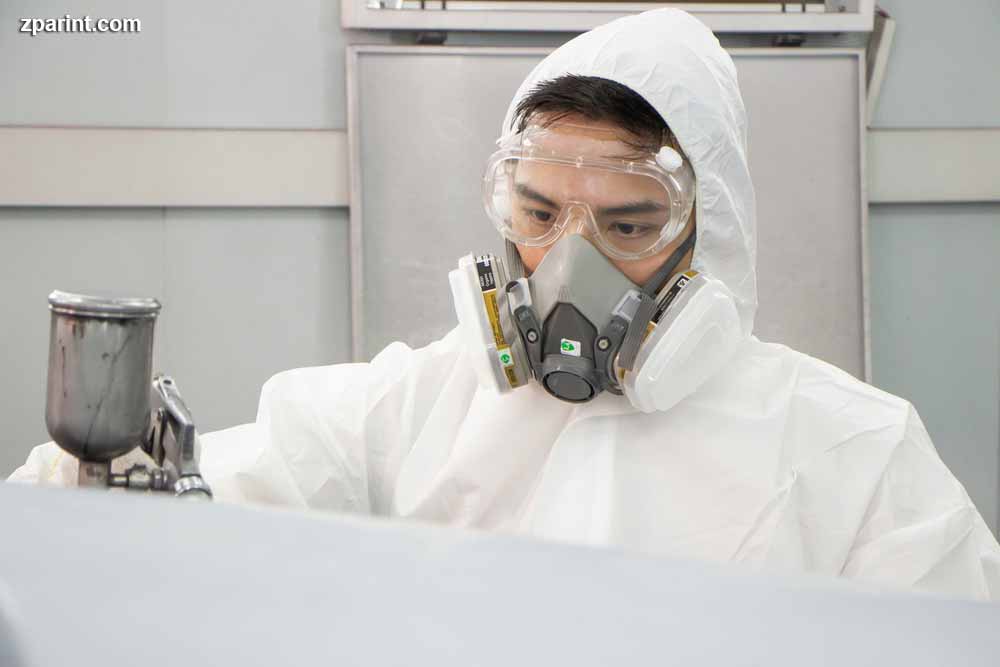Waterborne coatings have become mainstream in the automotive refinishing business and are fast becoming so in many industrial finishing applications. It is important to fully comprehend how this sort of paint is different from the solvent-based variety and determine whether it is the right solution for you. Also, by doing so, you will be able to effectively determine what you need to do to protect your paint shop and paint operators whenever water-based coatings are applied in it. Granted, transitioning from solvent-based coating to waterborne coatings isn’t cheap upfront.
However, the cost you will incur is more than justified in so many ways. This includes making your paint facility healthier for your team and the numerous environmental benefits you will access that using waterborne paint presents. This kind of paint is well noted for delivering a much cleaner and brighter finish when compared to solvent-based paint. It also delivers the capability to color-match in a markedly convenient and hassle-free manner when compared to the latter.
One of the biggest misperceptions in the finishing world is that paint booths aren’t necessary when you use waterborne paint. It is important to note that this is an erroneous belief. Paint booths serve many purposes including removing flammable vapor, capturing overspray particulate and providing a controlled environment so that a process can be repeated on similar conditions helping with quality control. Ultimately, paint booths are required for waterborne coatings because of the need to control particulate emissions to the atmosphere. Let us now take a closer look at some of the reasons why you will still need a paint booth for your water-based coatings jobs despite what you might be thinking.
Waterborne coatings still contain volatile organic compounds (VOCs) though in lower quantities
VOCs are carbon-based chemicals present in solvents, which produce flammable vapors once they evaporate. VOCs have been found to play a leading role in contributing to ozone layer depletion and smog whenever they are released into the air. Worse, the various toxins present in them are known to persist in the atmosphere long after the coating job is over. These lower VOCs can compound if not evacuated and there will be serious health concerns for your paint operators once they are exposed to VOCs for prolonged periods of time. Granted, there happens to be much fewer VOCs in waterborne coatings than in the solvent-based varieties.

Exhaust fans are still necessary when spraying waterborne paint
Due to the lower VOCs content present in water-based coatings, some people think exhaust fans are superfluous in a spray paint booth in which some paint is employed. When it comes to the containment of VOCs and facilitating an ideal airflow, a ventless booth isn’t a practical solution. Waterborne coatings still have solvents present in both undercoats and topcoats, and this makes an efficient exhaust fan necessary. An exhaust fan sets to work by eliminating both flammable and combustible materials in the paint booth environment.

Downstream of the process, excellent airflow guarantees your team will avoid highly-concentrated pockets of vapors which are potentially ignitable. Whether it is flammable or not, you would not want your paint operators to breathe overspray. Neither would you want overspray to drift freely in your paint facility and ultimately land on the objects being finished. Lastly, despite the kind of paint your team uses, excellent airflow within the breathing zone is essential for their overall health and wellbeing. So whether you utilize waterborne coatings or solvent-based coatings, the right spray paint booth is mandatory to make sure your team and paint shop are effectively protected.
ZPar International is a leading manufacturer of a wide variety of spray booths and paint booths including those that are configured for work with waterborne coatings. We also offer other finishing equipment and accessories such as powder coating booths, curing ovens and even abrasive blasting units.

